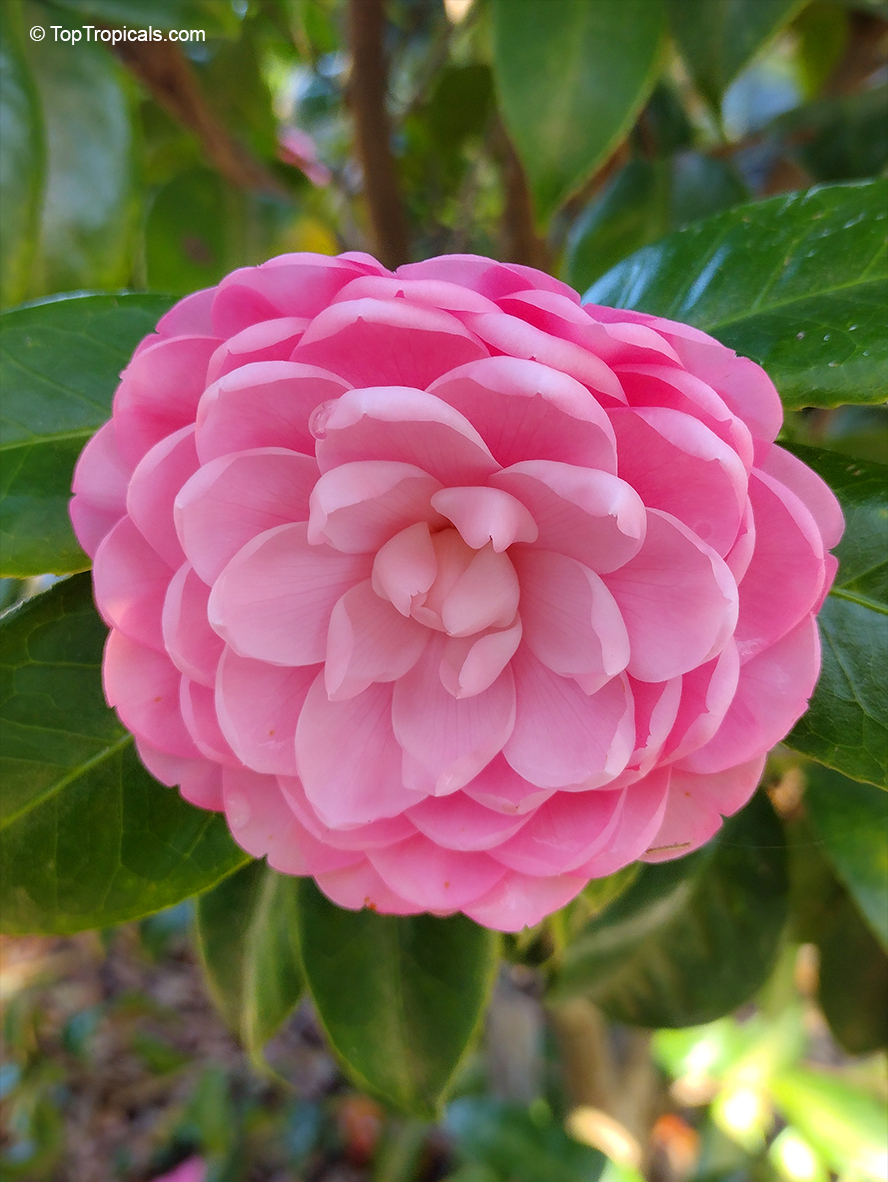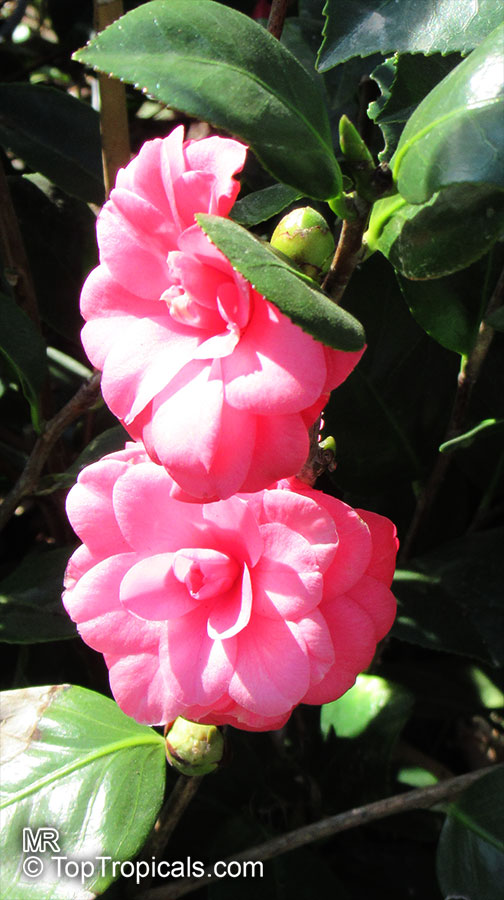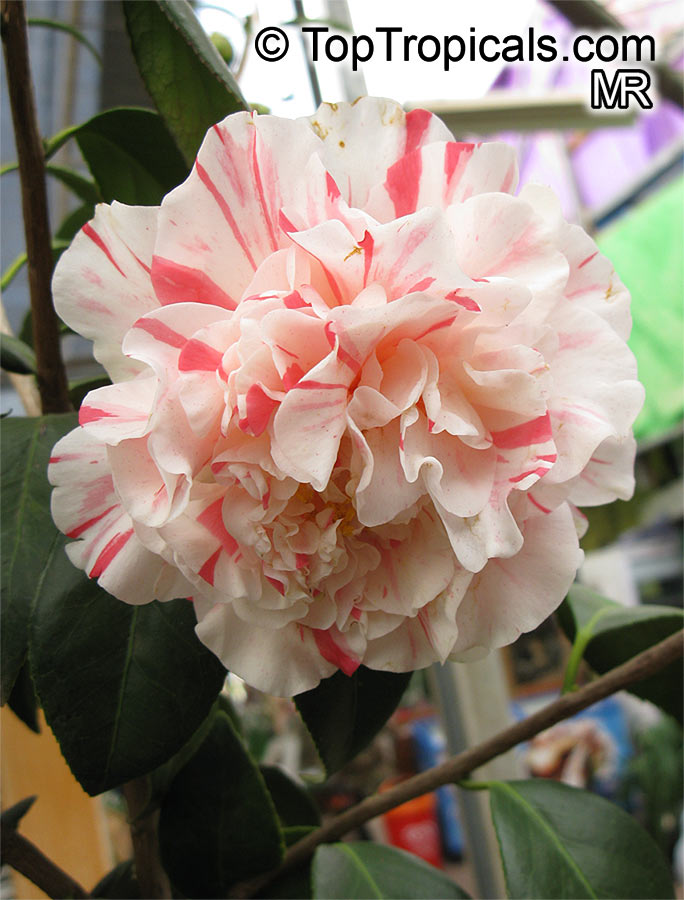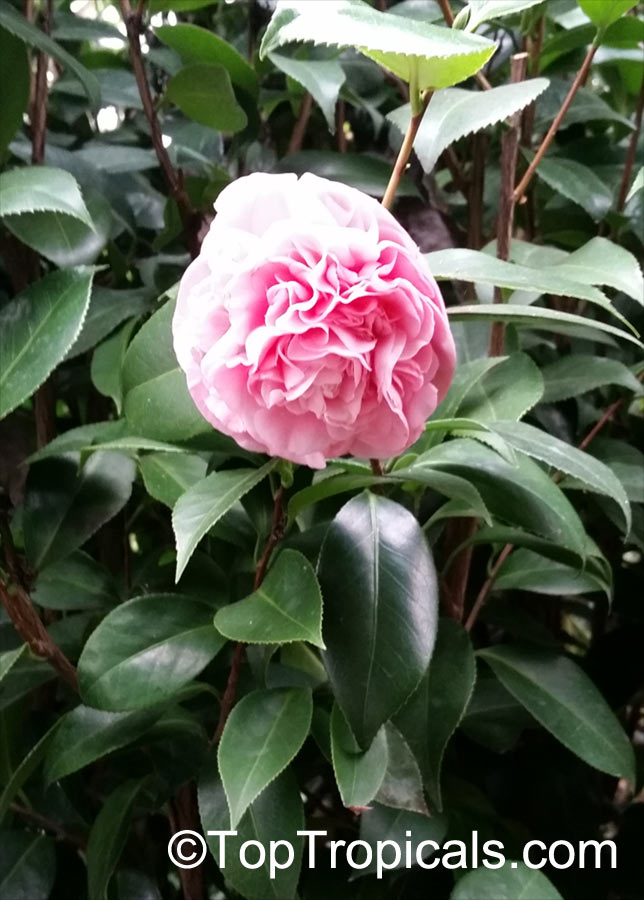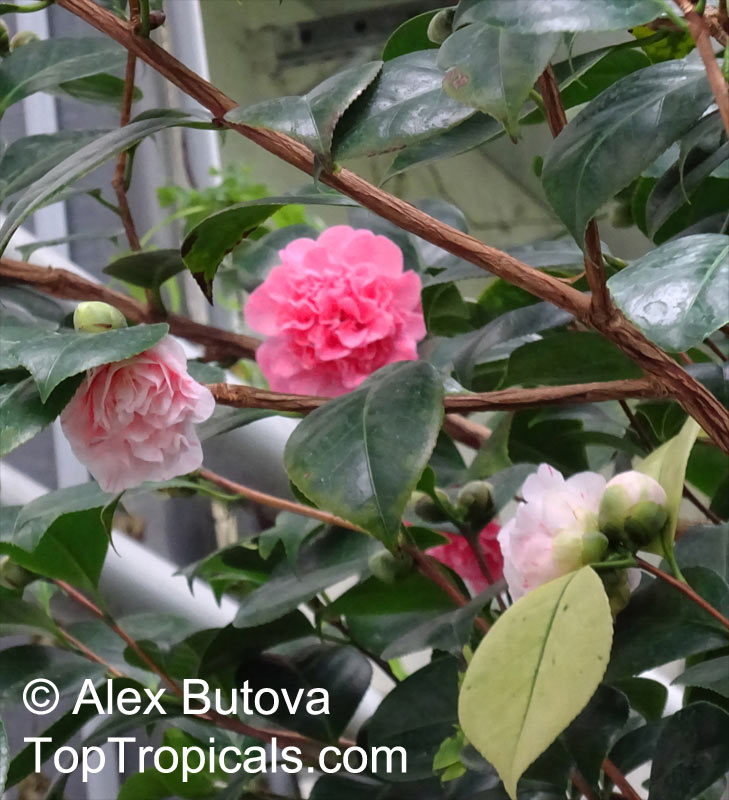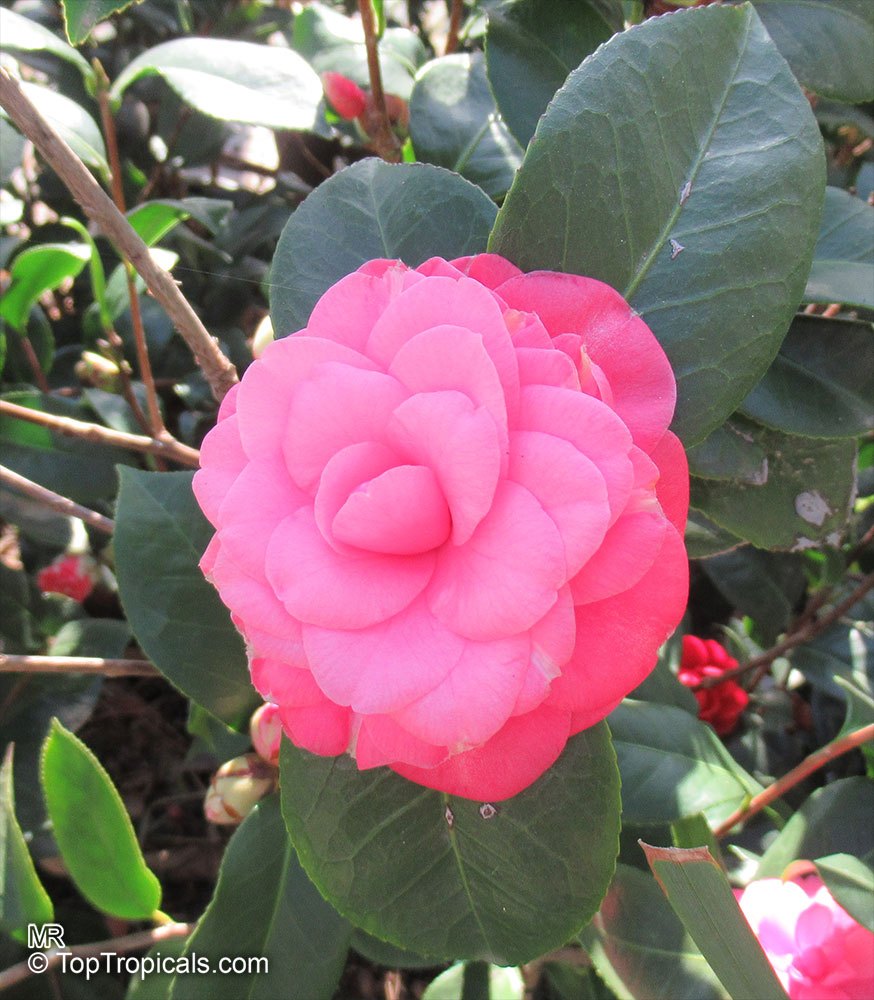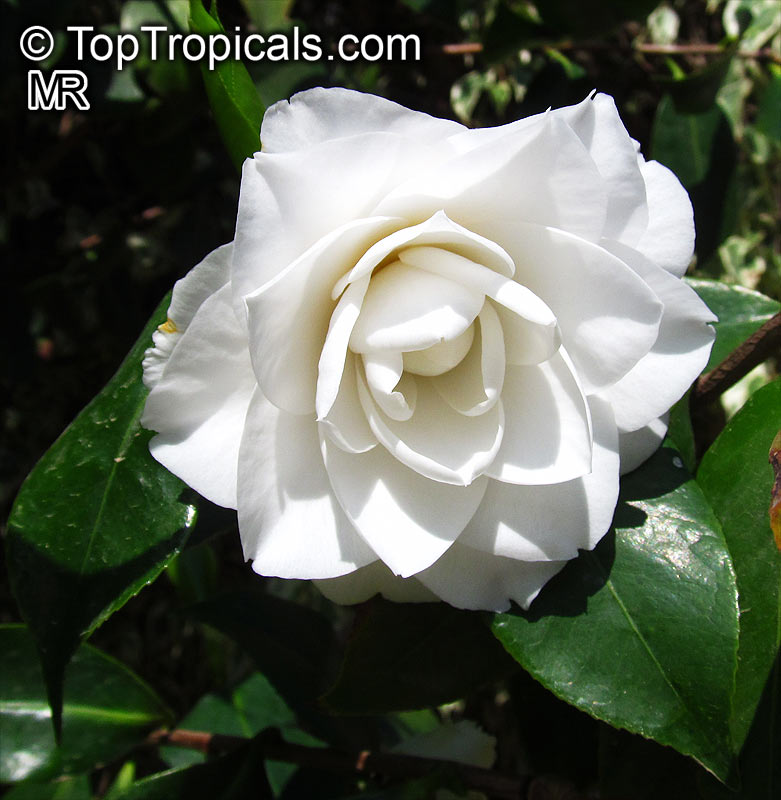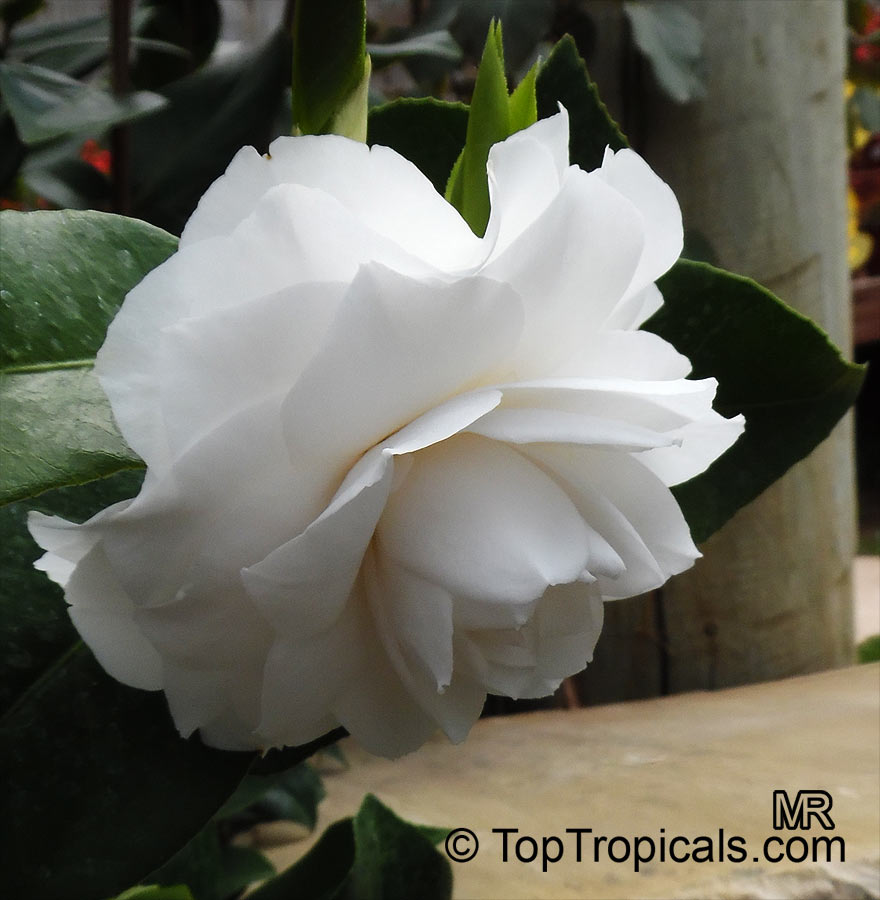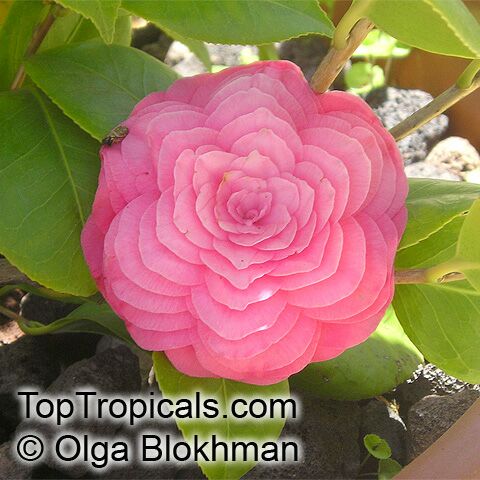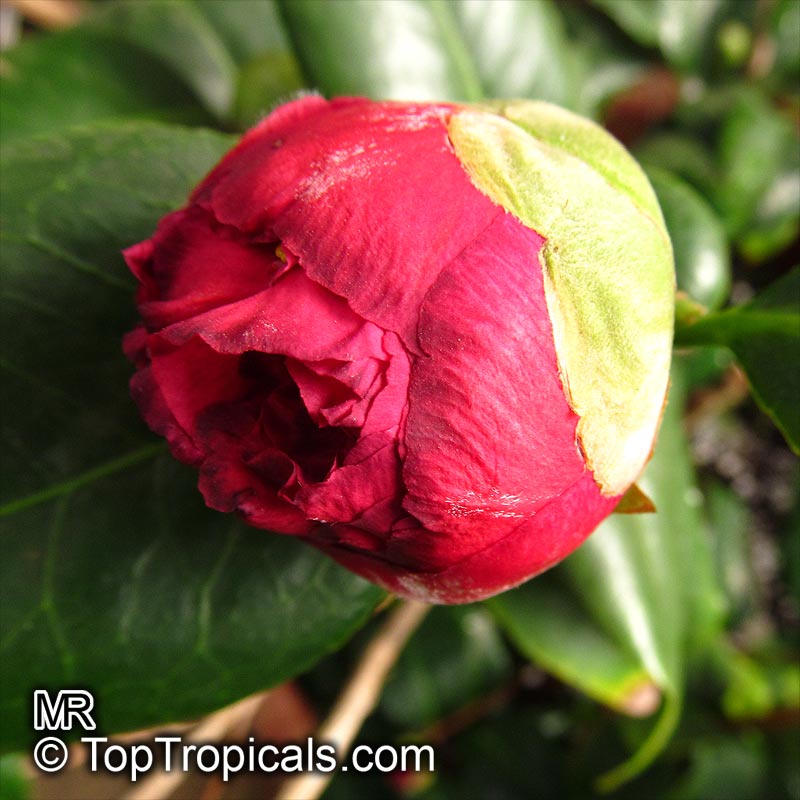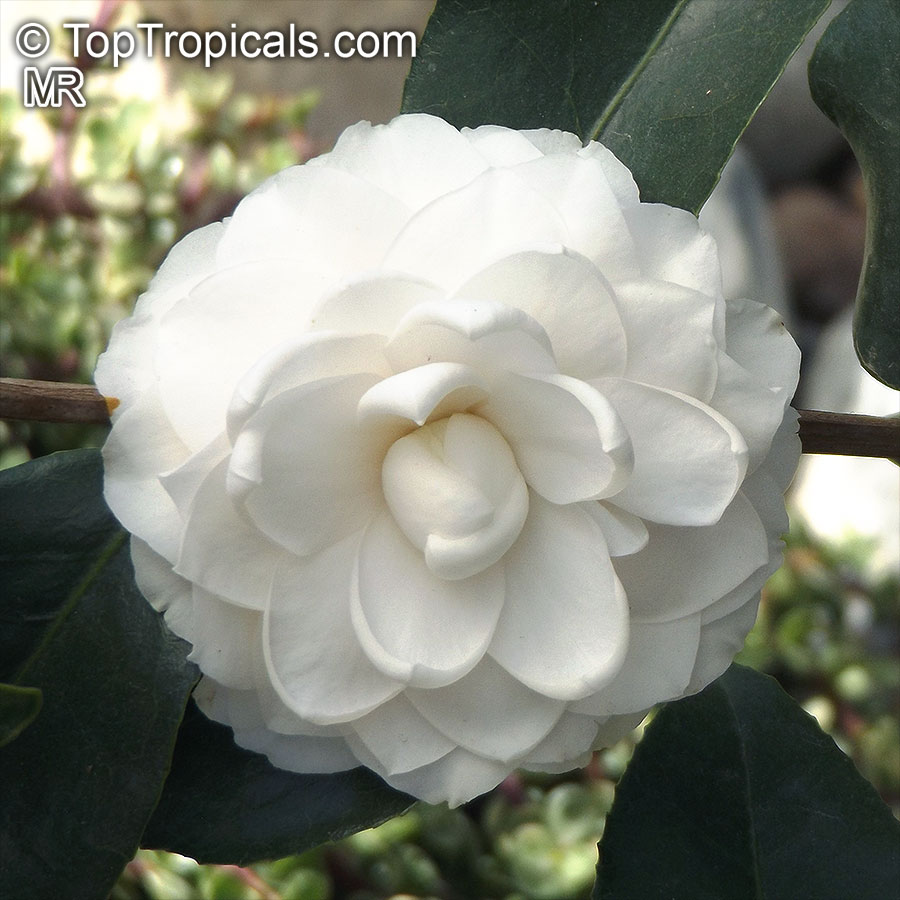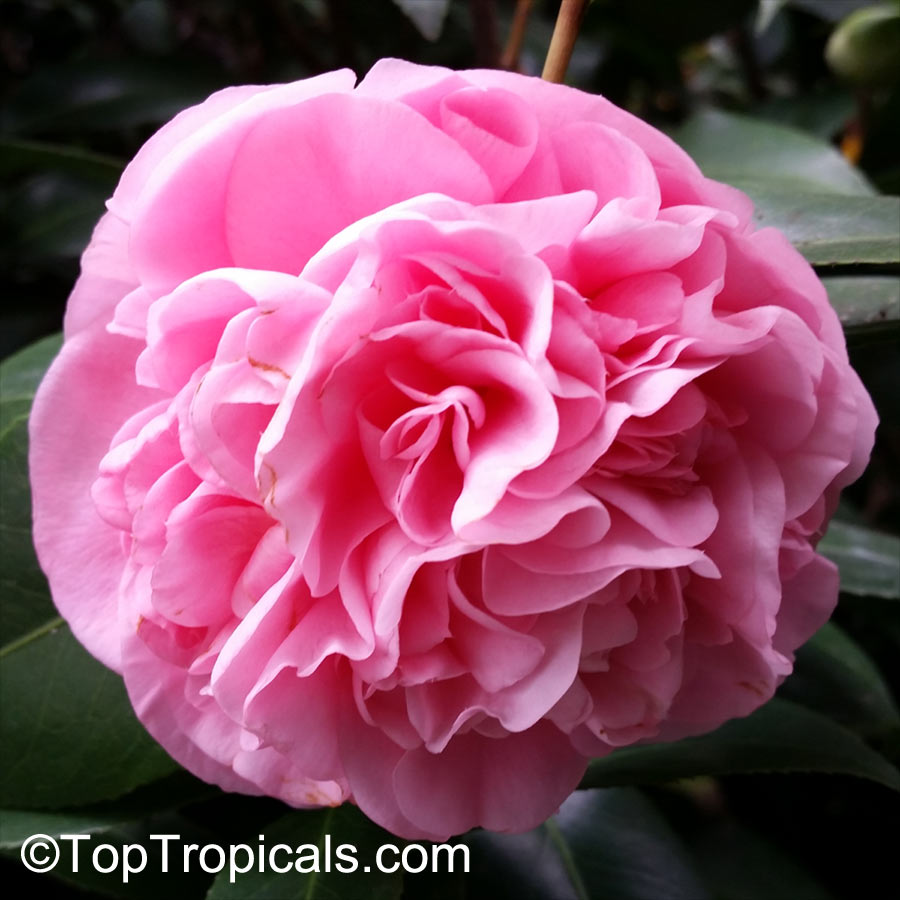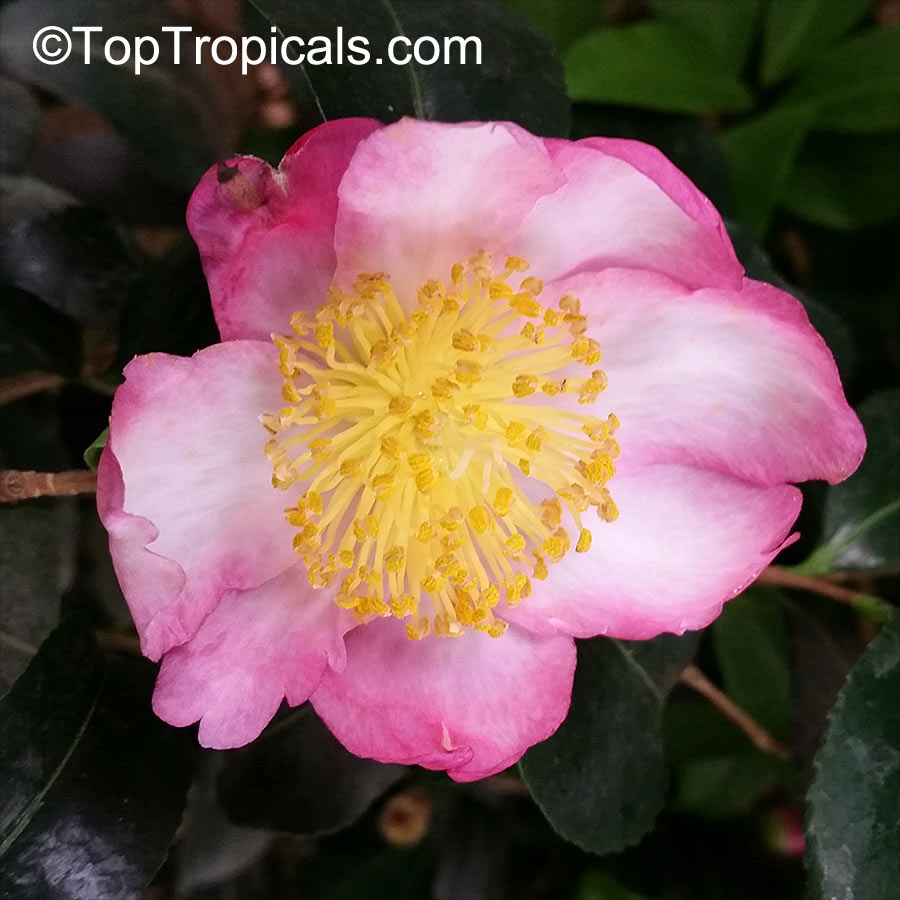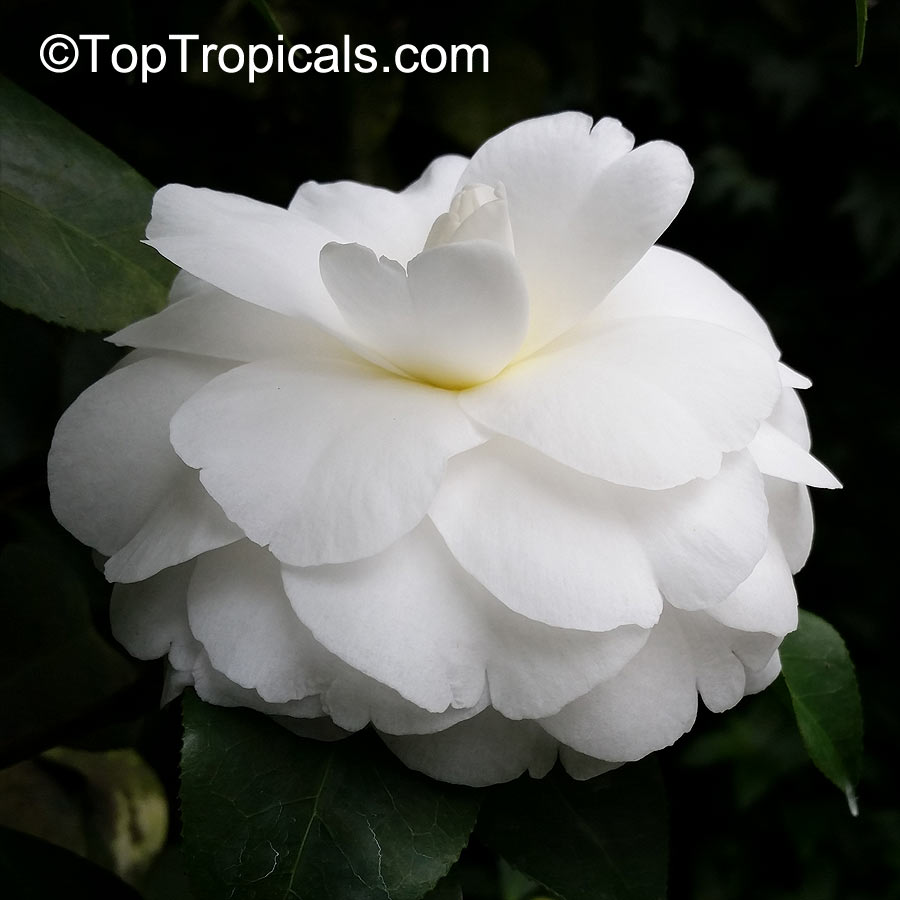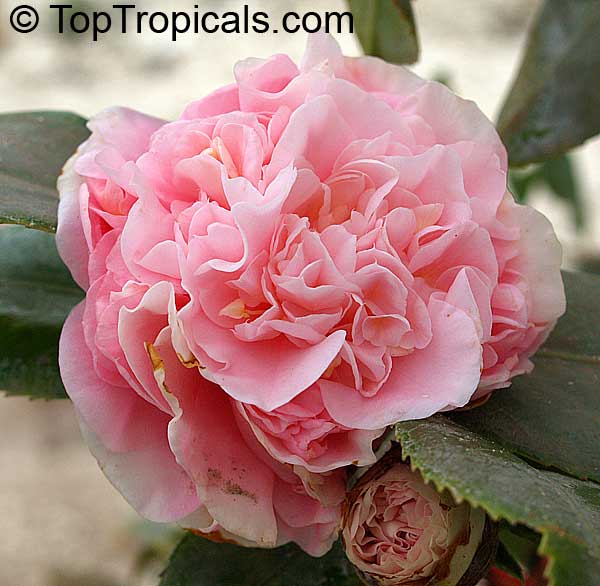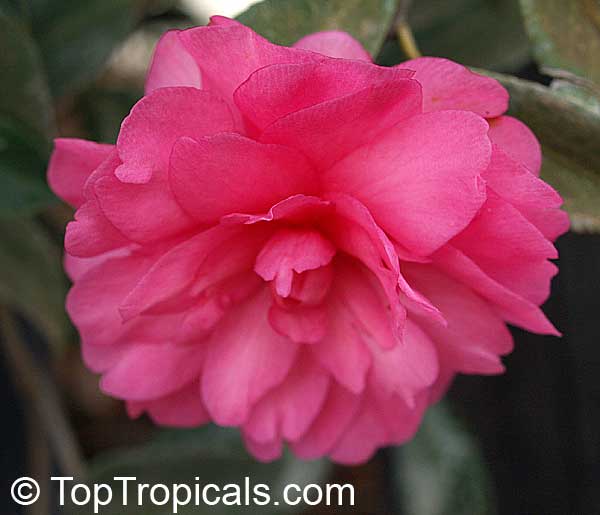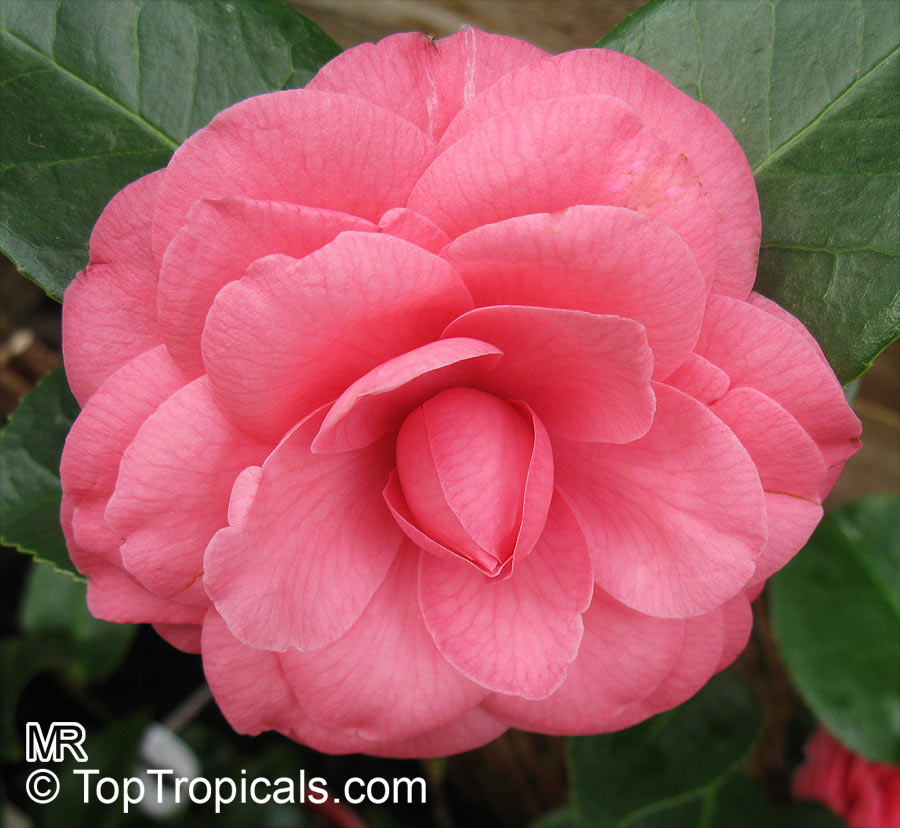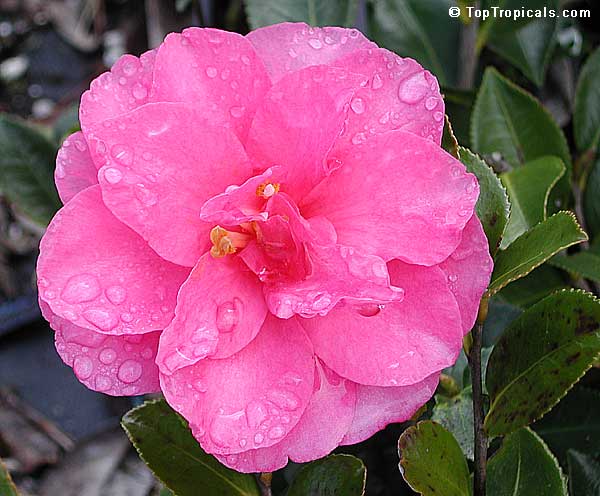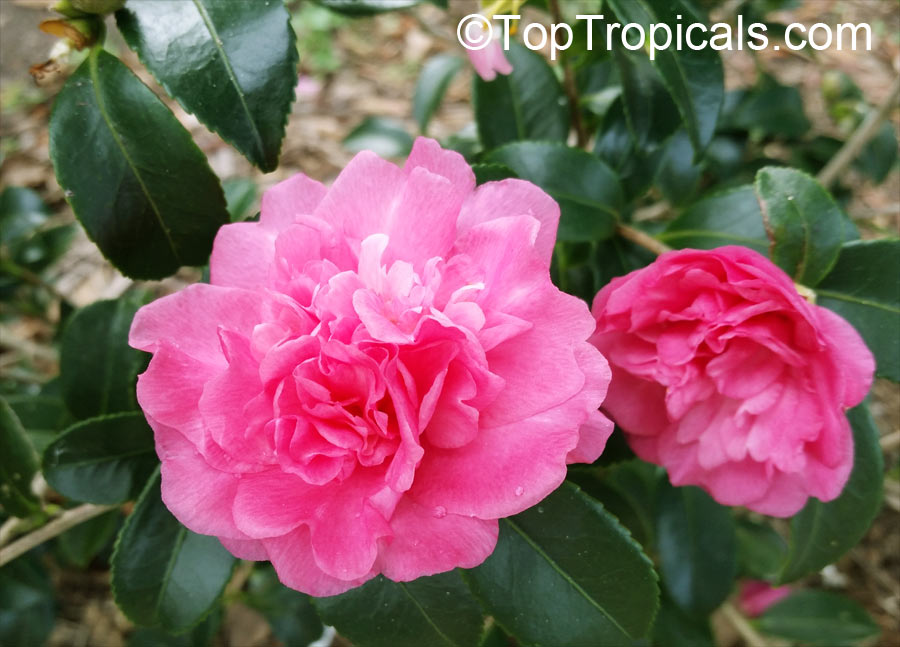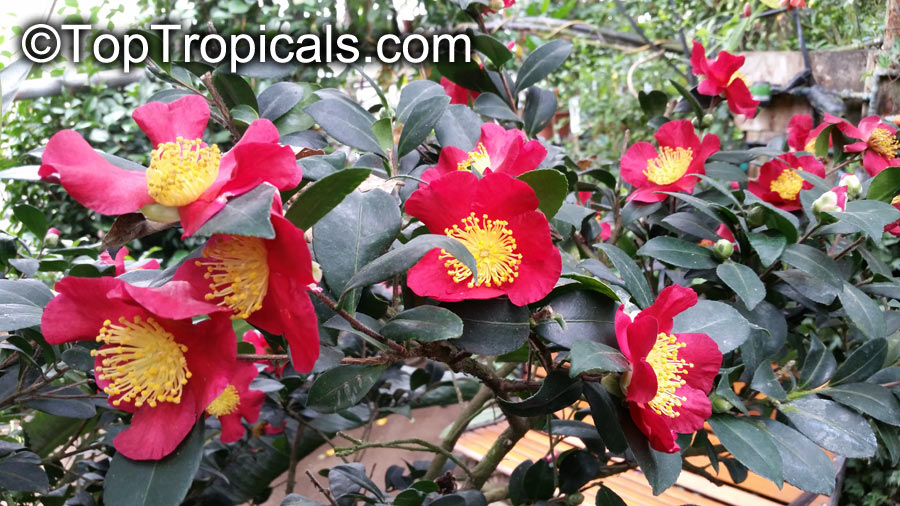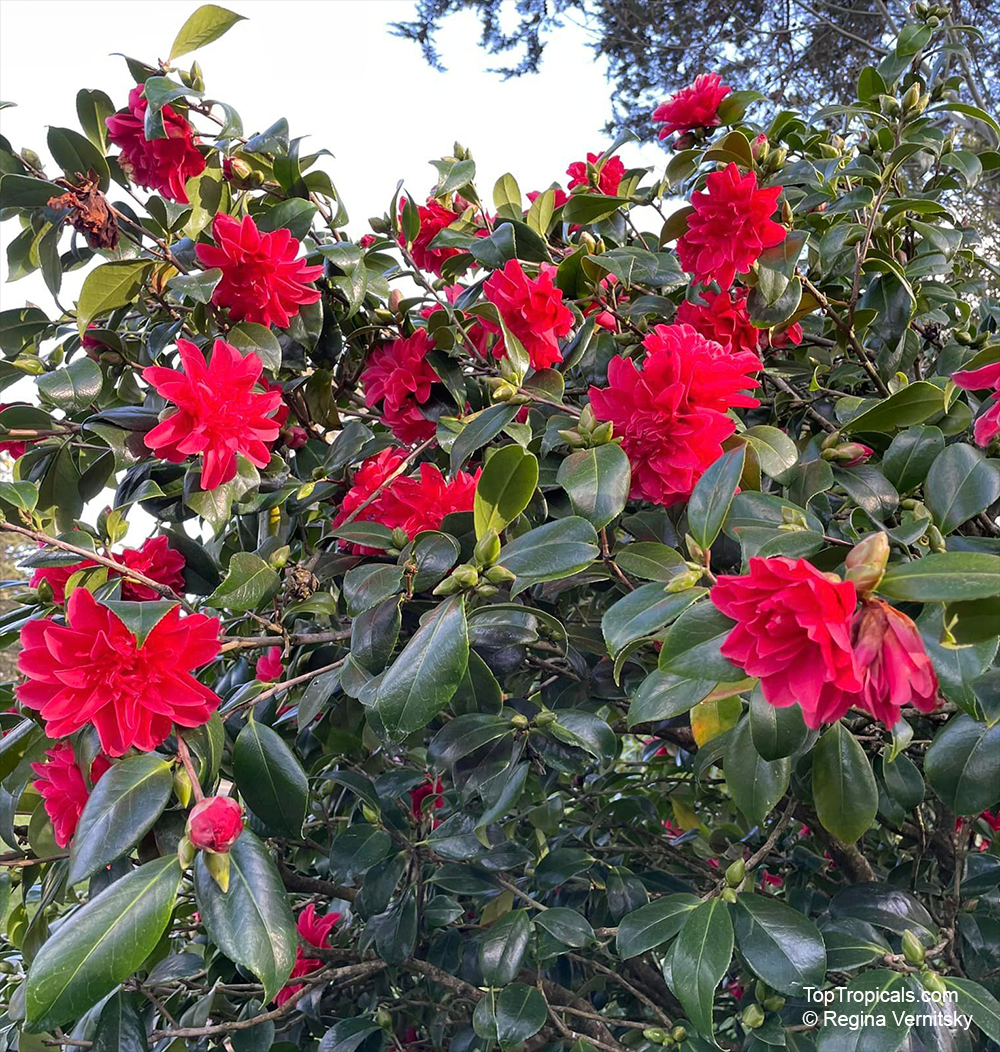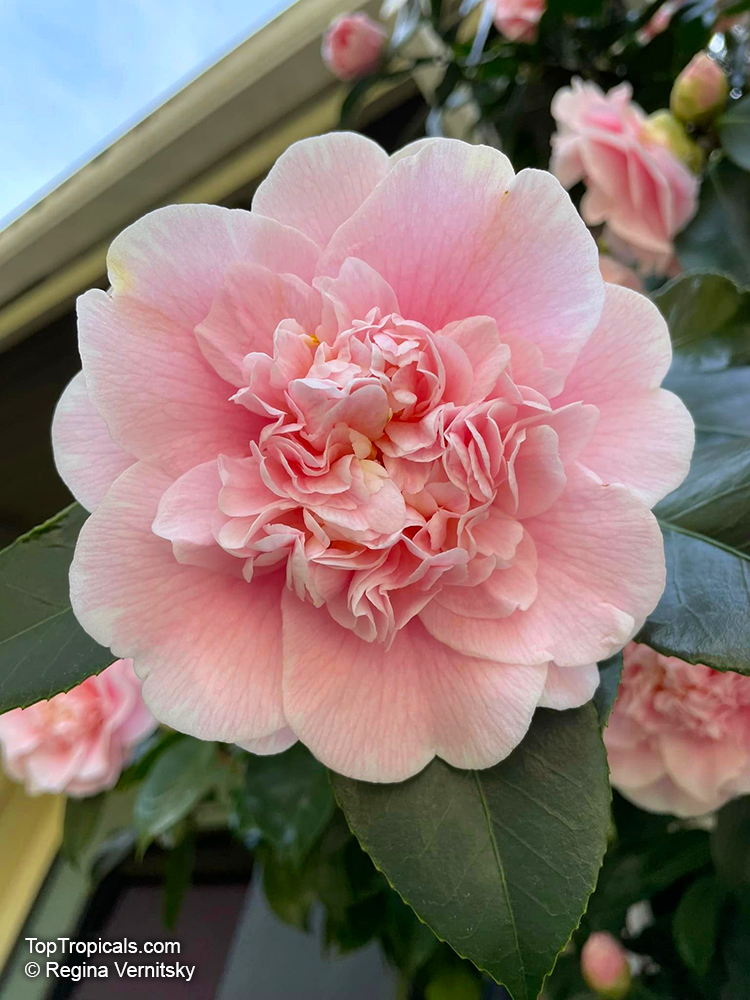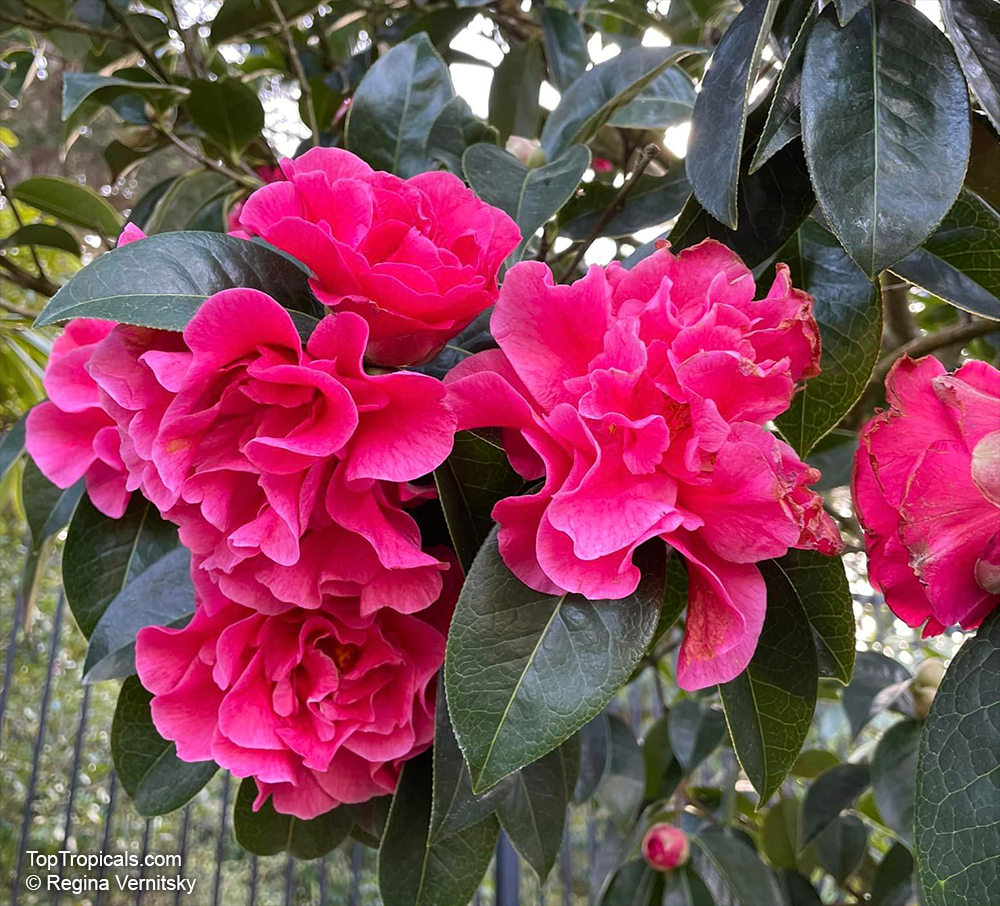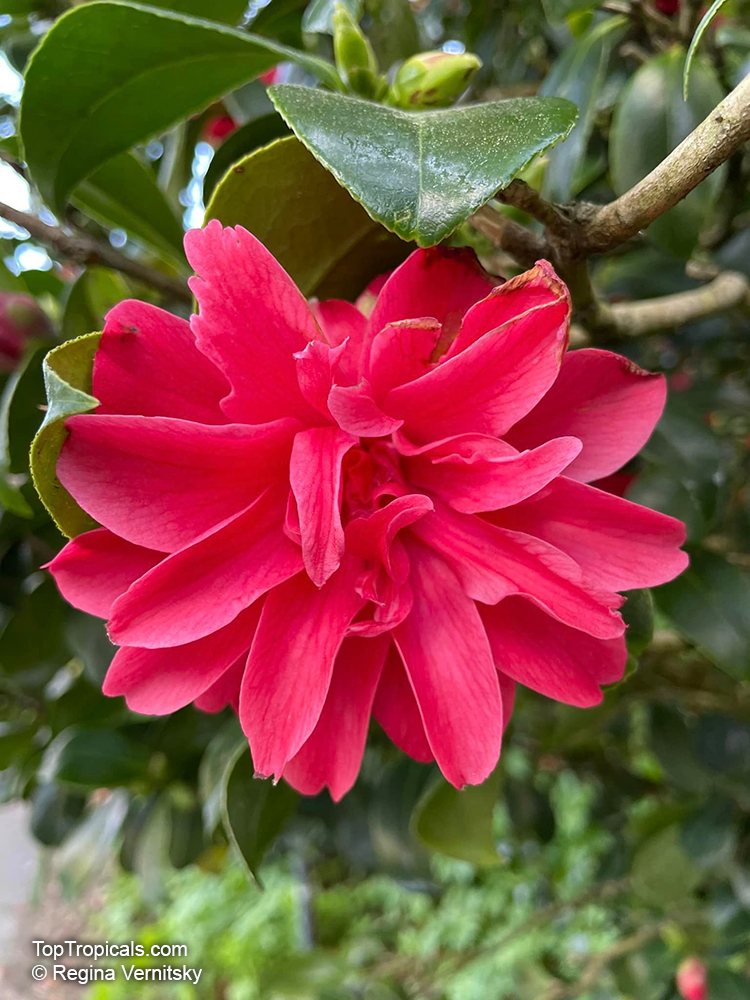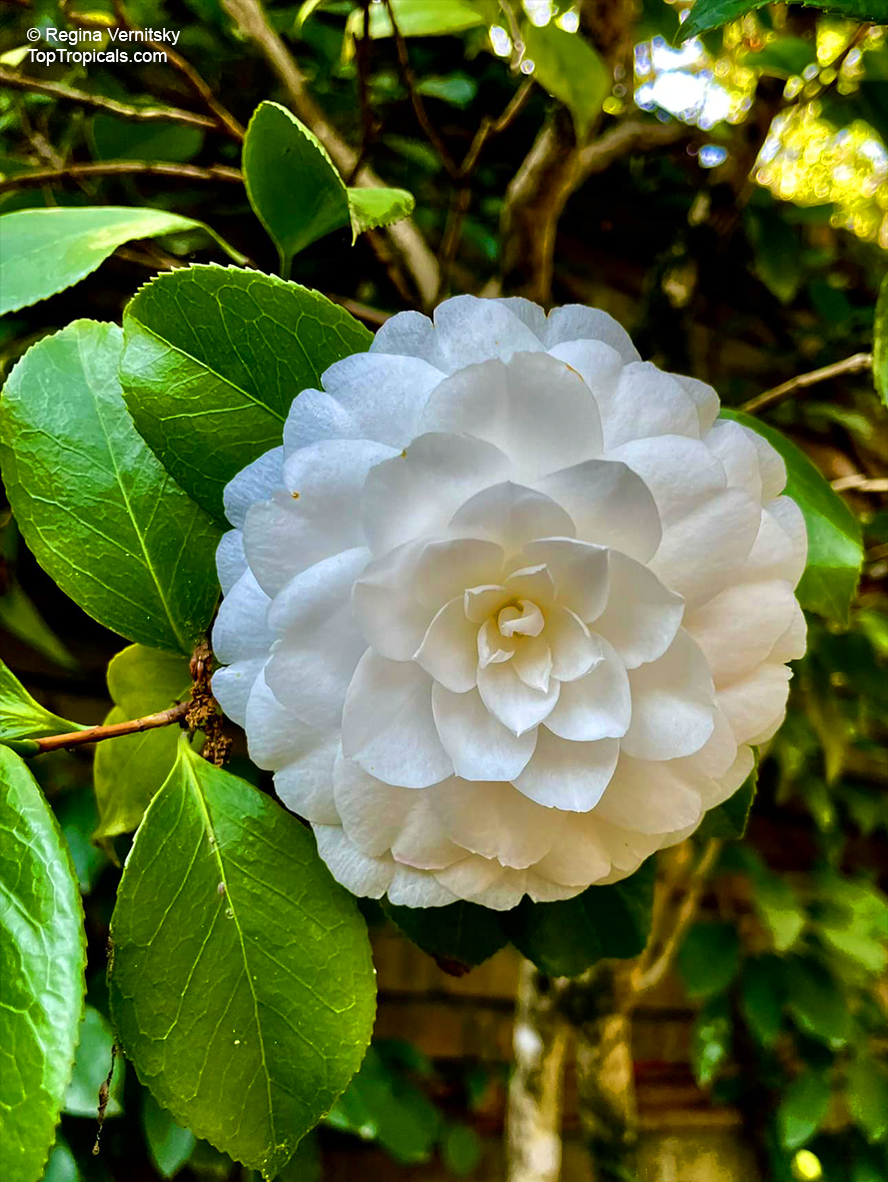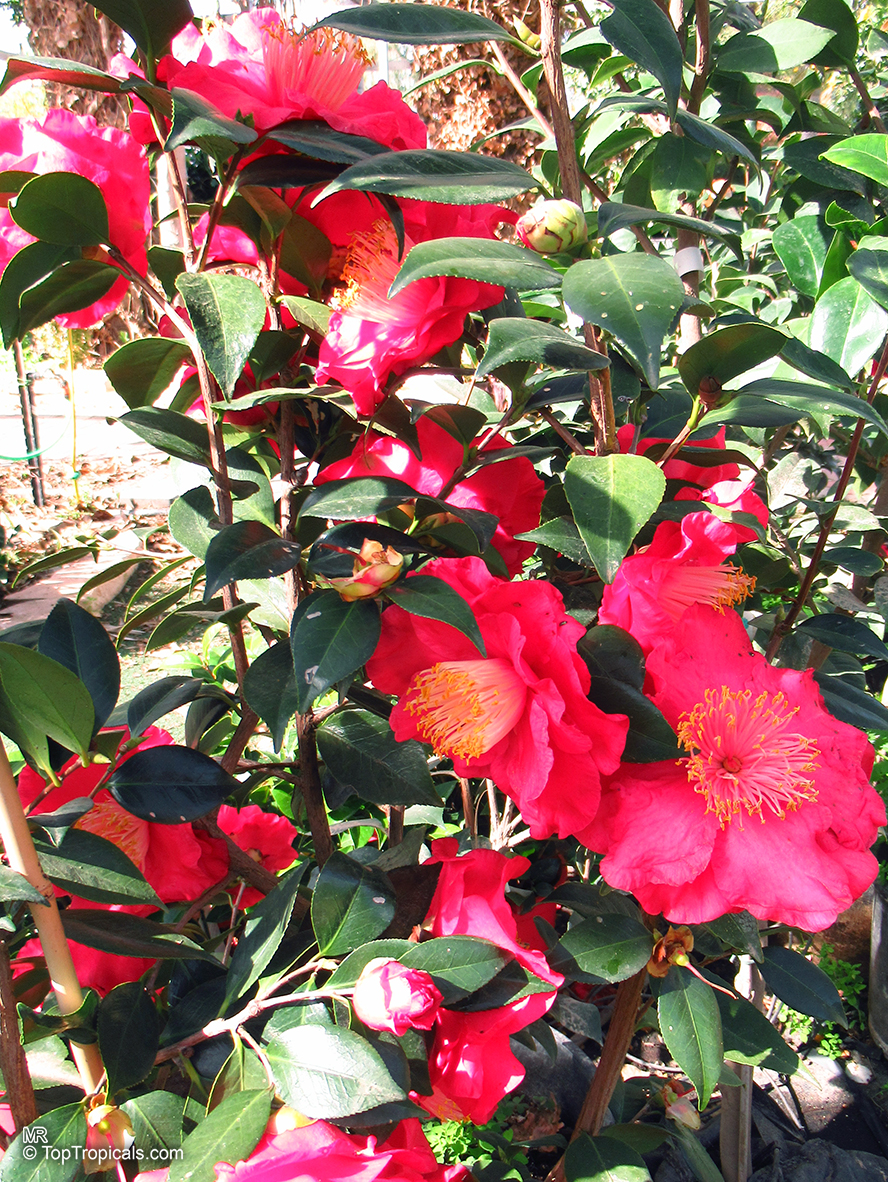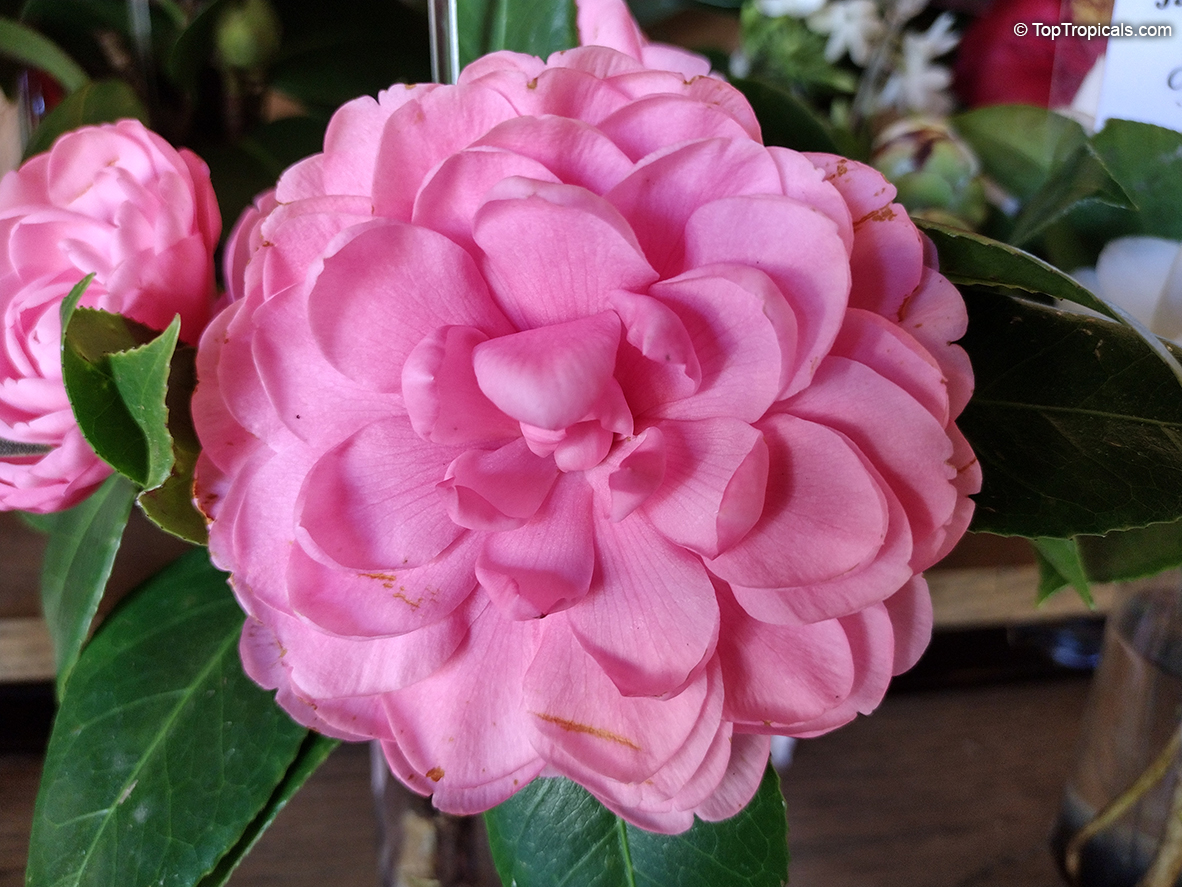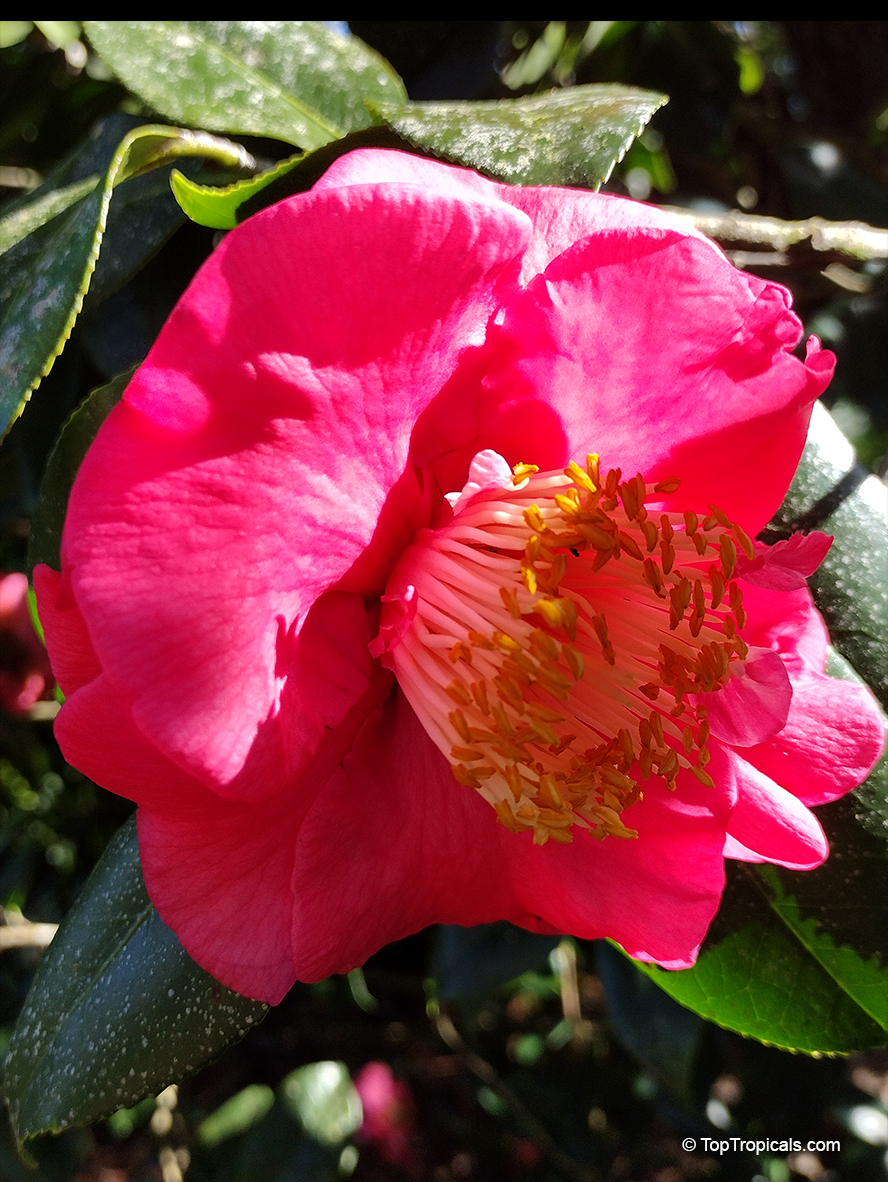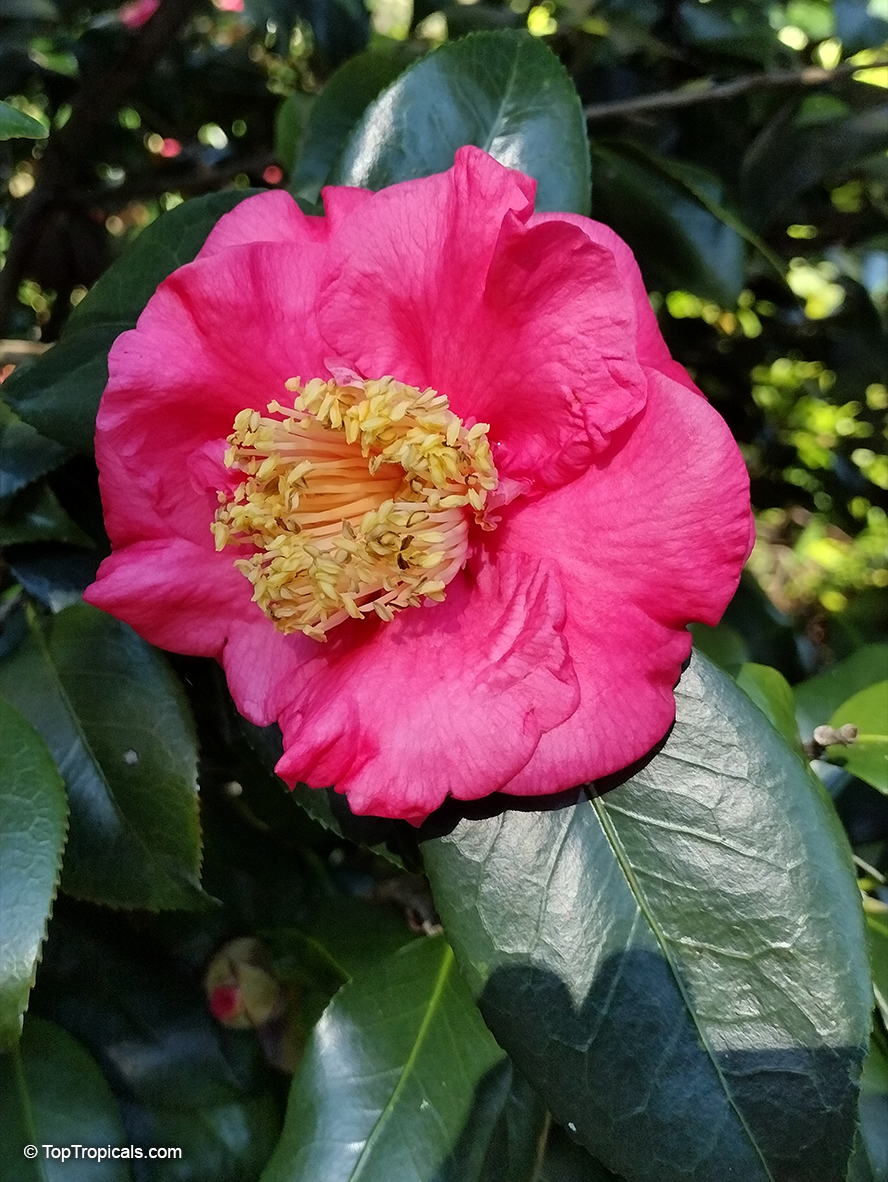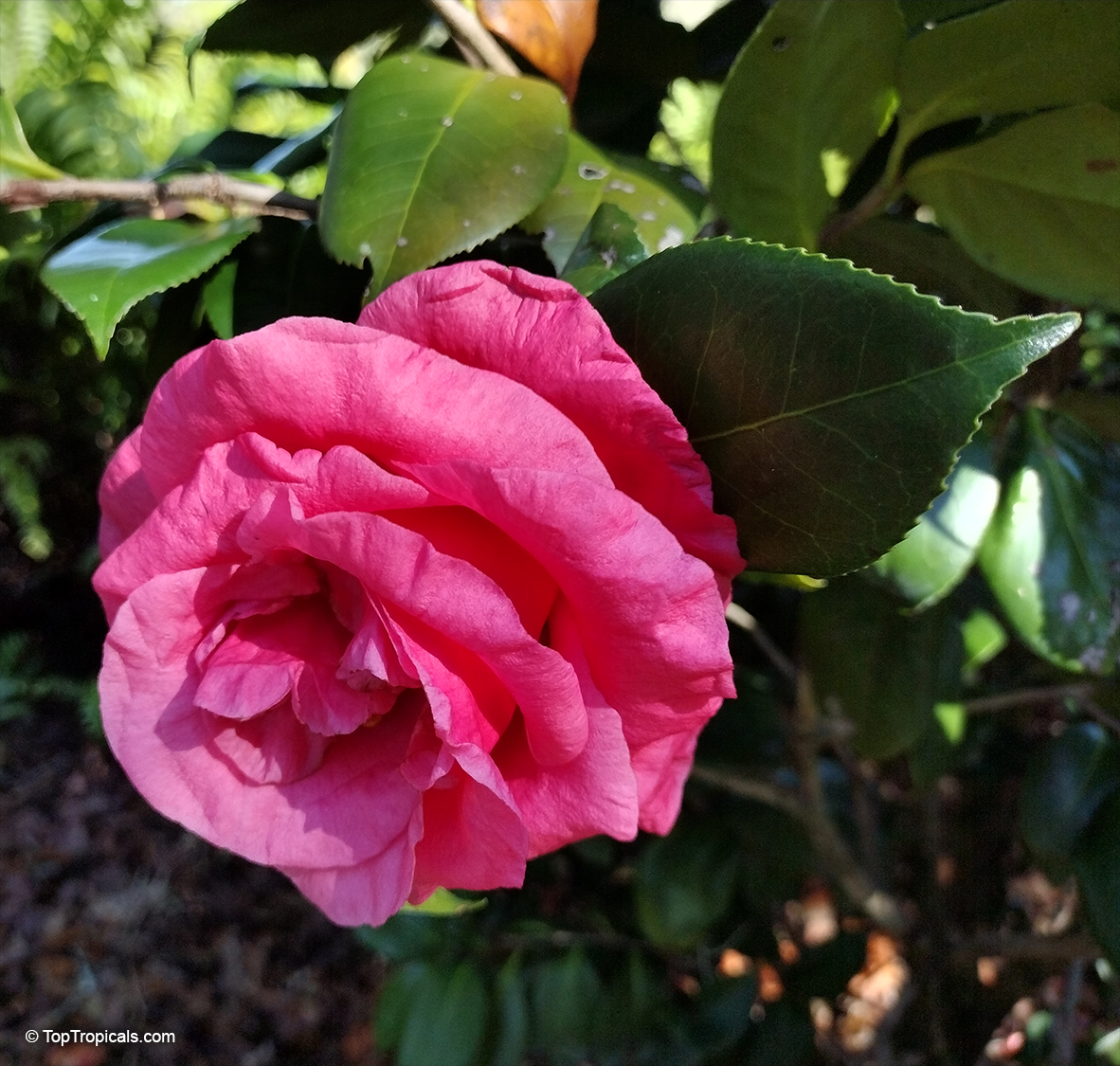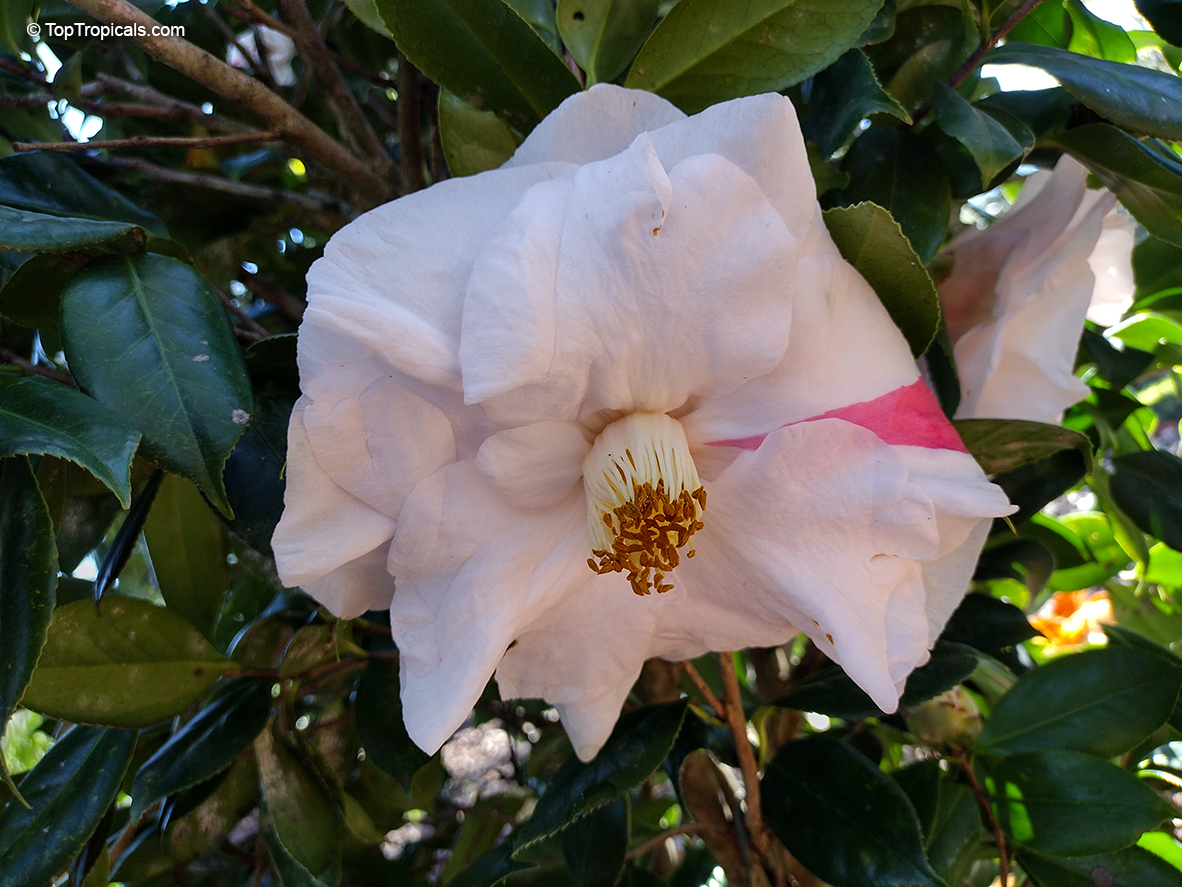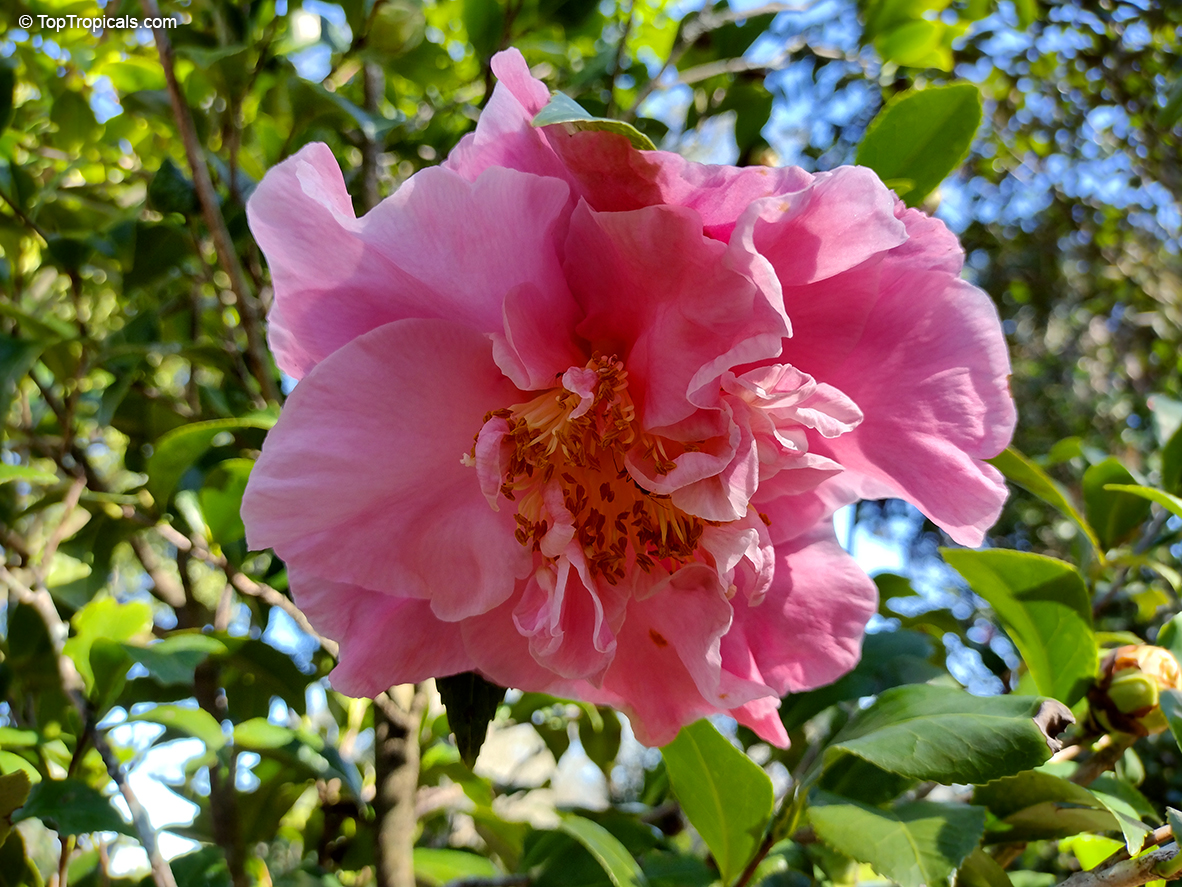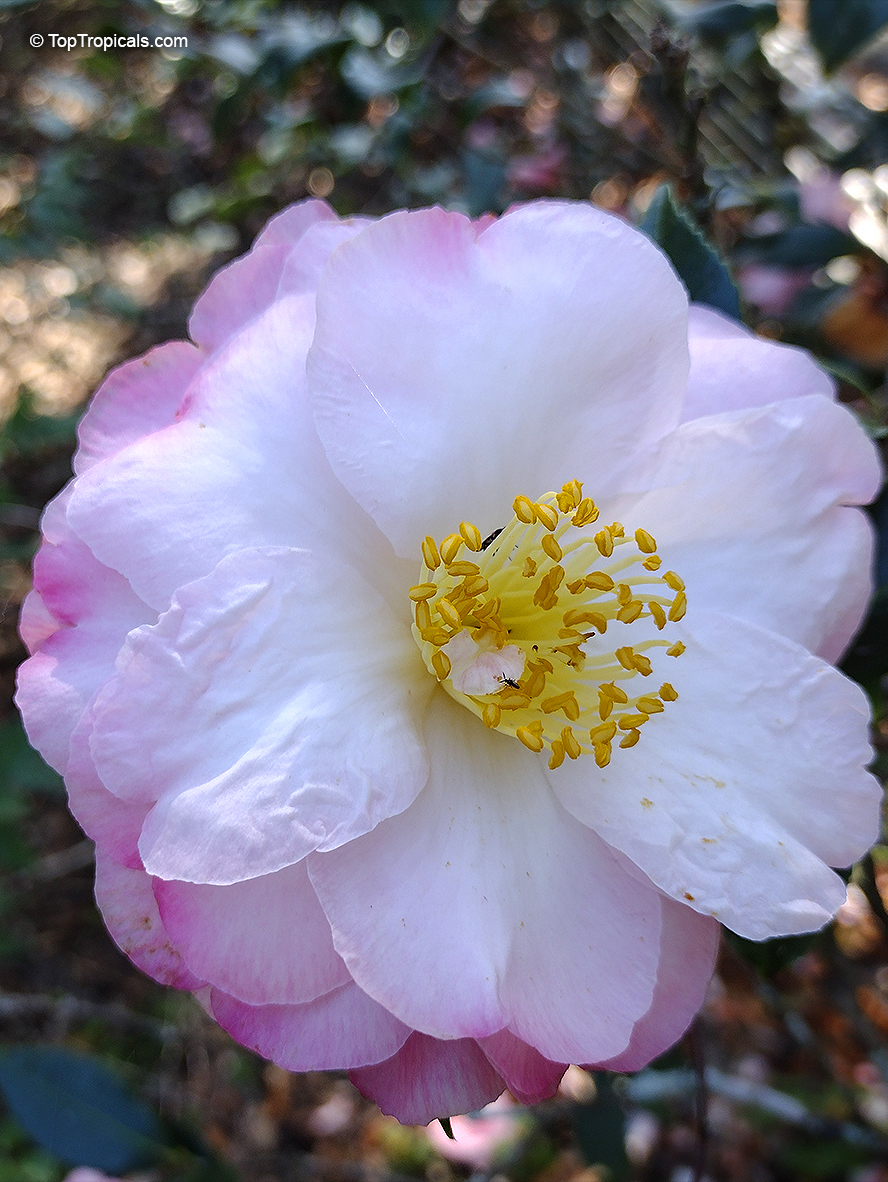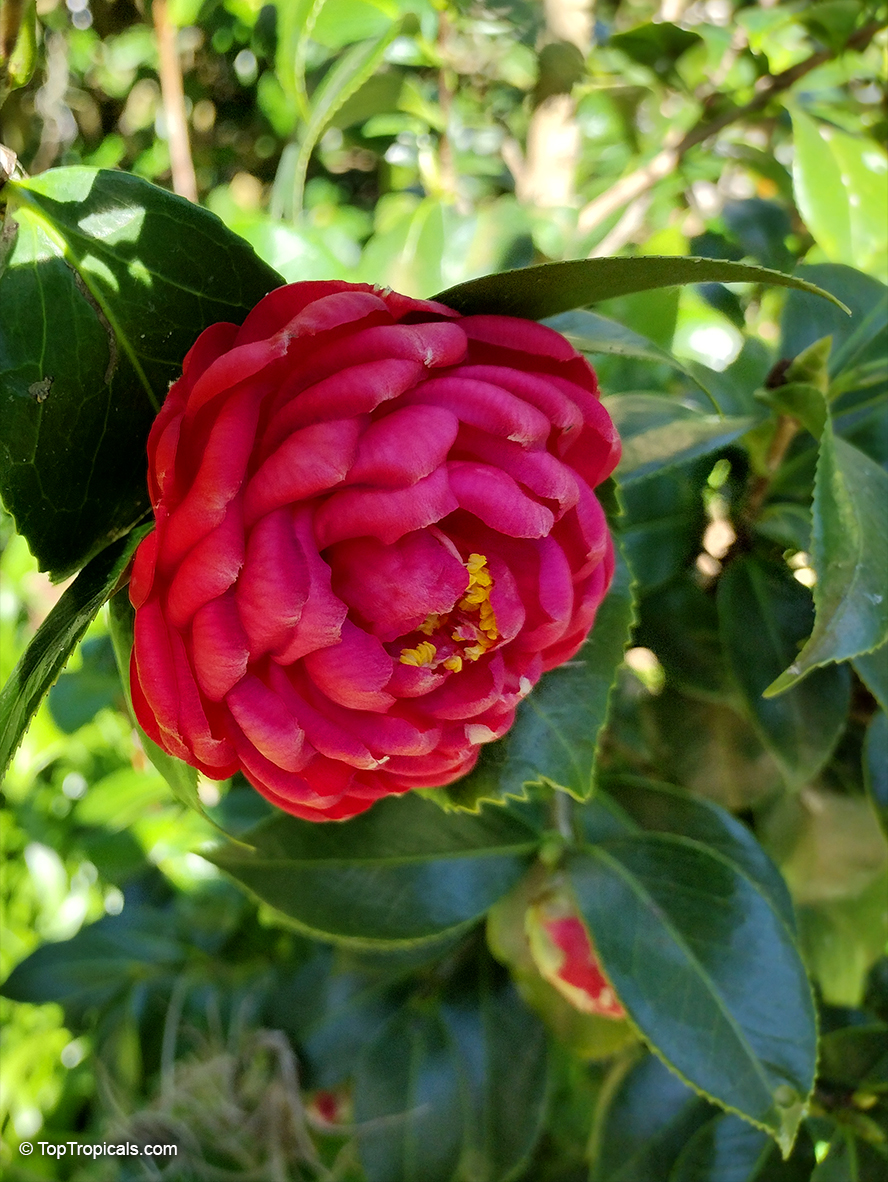Camellia japonica (Camellia)
Top Tropicals Plant Encyclopedia
Botanical names: Camellia japonica, Camellia sasanqua
Common name: Camellia
Family: Theaceae
Origin: Japan











Camellias are not tropical plants, but cold sensitive. The are grown successfully outdoors and usually survive occasional temperatures as low as 0 to 10 degrees F. Flower buds are damaged at temperatures below 10 to 15 degrees F. Open camellia blossoms normally are damaged at temperatures below 26 to 28 degrees F. Most Camellias grow and produce better flowers in partial shade. Plants located in full sun often are less dormant during warm periods of the winter and may suffer damage if cold weather follows. Plants in a northern or western exposure of a building or fence or otherwise protected from intense morning sun will usually stand more cold weather than those in an eastern or southern exposure. Choose a planting site with well-drained soil. Do not plant where shade trees with shallow root systems will compete with Camellias for nutrients and water. Plants in the sun may suffer scald on the leaves or leaves may appear yellow rather than deep green. Plants of Camellia sasanqua generally do better in the sun than those of C. japonica. Camellias will grow in most well-drained slightly acid soil.

